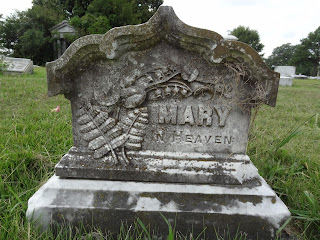In September of 1864, Atlanta was burned to the ground after General William Tecumseh Sherman captured the city in one of the major Southern campaigns of the Civil War. The city's seal reflects this major event, with a phoenix rising from the ashes, the dates 1847 (incorporation of the city of Atlanta) and 1865 (reconstruction), and the Latin word "resurgens," meaning "rising again."
After the Civil War, Atlanta quickly grew in importance. In 1868 it became the state capital, and by 1880 it was the largest city in Georgia, surpassing Savannah. Georgia Tech was founded in 1885, and ten years later Atlanta hosted the
Cotton States and International Exposition, which had an attendance of 800,000 and promoted what the Atlanta Constitution newspaper editor
Henry W. Grady called "the New South." Commerce and industry replaced agriculture; Coca-Cola and streetcars proliferated.
Much of Atlanta's early history is reflected in historic
Westview Cemetery. Founded in 1884, and located just 3.5 miles west of city hall and the state capitol building, Westview is the largest cemetery in the Southeast. It's full of names that any Atlantan would recognize: Grady, Candler, Woodruff, Egleston and others are etched onto the tombstones and vaults. The Civil War Battle of Ezra Church was fought on July 28, 1864 on the site that would become the cemetery just 20 years later. Three thousand Confederate soldiers and 642 Union soldiers died in the battle.
Atlanta's more recent history is also represented in the cemetery. Mayor
William B. Hartsfield (of Hartsfield-Jackson International Airport fame, and promoter of "the city too busy to hate" slogan) is laid to rest in Westview. Vivian Malone Jones, one of the first two African Americans to enroll at the University of Alabama, is also buried in the cemetery. Fifty years ago in 1963, segregationist governor George Wallace tried to block her from registering by standing in the doorway to the University auditorium in the famous "
stand in the schoolhouse door." On a sad note, Alice Hawthorne, the only person to die in the
Centennial Olympic Park bombing during the 1996 Olympics, is also buried at Westview.
Atlanta is often criticized as a city that lacks substance. Observing this sprawling metropolis replete with strip malls and parking lots, sometimes I think the city's detractors have a point. Just within walking distance of our apartment, the recent demolition of the
Crum and Forster building and a
Neel Reid apartment building show the lack of reverence for the past that sometimes occurs in Atlanta. But a visit to Westview Cemetery helps to uncover some of the rich history of our city. A lot of locals are familiar with historic
Oakland Cemetery, but Westview is an under-rated gem that every Atlantan should visit.
 |
| The original entrance gates |
 |
| Last Supper relief. |
 |
| Confederate memorial. |
 |
| Confederate graves. |
 |
| The water tower. |
 |
| Candler family plot. |
 |
The Grady Vault. Henry Grady described General Sherman as "an able man... though some people think he is a mite careless about fire."
 |
|
|
|
 |
| Jesse Parker Williams, Confederate army captain and lumber and railroad magnate. |
 |
| Ernest Woodruff led the Trust Company (SunTrust bank). His sons Robert Woodruff and George Woodruff ran Coca-Cola from the 1920s to the 1950s. In 1979 the brothers donated $105 million to Emory University, at the time the largest single donation ever to an institution of higher education. The Woodruff Foundation has since donated nearly $600 million more to Emory. |
 |
| In a bit of overlapping history, the Woodruff brothers attended the high school that would later be named for Henry W. Grady, and bought the Coca-Cola company from Asa Griggs Candler. |
 |
| "She hath done what she could." |
 |
| Born in 1797. |
 |
| The Adair family plot, namesake of Adair Park. George Adair was the conductor on the first train entering Atlanta over the Georgia Railroad in 1845. He founded the first streetcar system in Atlanta in 1871. His son (also named George) worked with Asa Candler to establish the Druid Hills neighborhood. |
 |
| While Hezekiah Cheshire (of Cheshire Bridge fame) is buried in Rock Spring Presbyterian Church Cemetery, at least one of his children is buried at Westview. |
 |
| Children's Healthcare Egleston Hospital is named after Henrietta Egleston. |
 |
| In yet another bit of connected history, Egleston Hospital has a George Woodruff pavilion. |
 |
| James Joseph Haverty founded Haverty's furniture company in downtown Atlanta in 1885. There are now more than 100 stores in 16 states. |
 |
| Very odd statue in one of the vaults. |
 |
| Another odd vault set-up. |
 |
| The mausoleum, built in 1943, is the largest structure of its kind. It contains space for 11,444 entombments. |
 |
| Weather vane on the mausoleum/abbey. |
 |
| City seal on the mausoleum. |
 |
| Mausoleum entrance |
























































































No comments:
Post a Comment